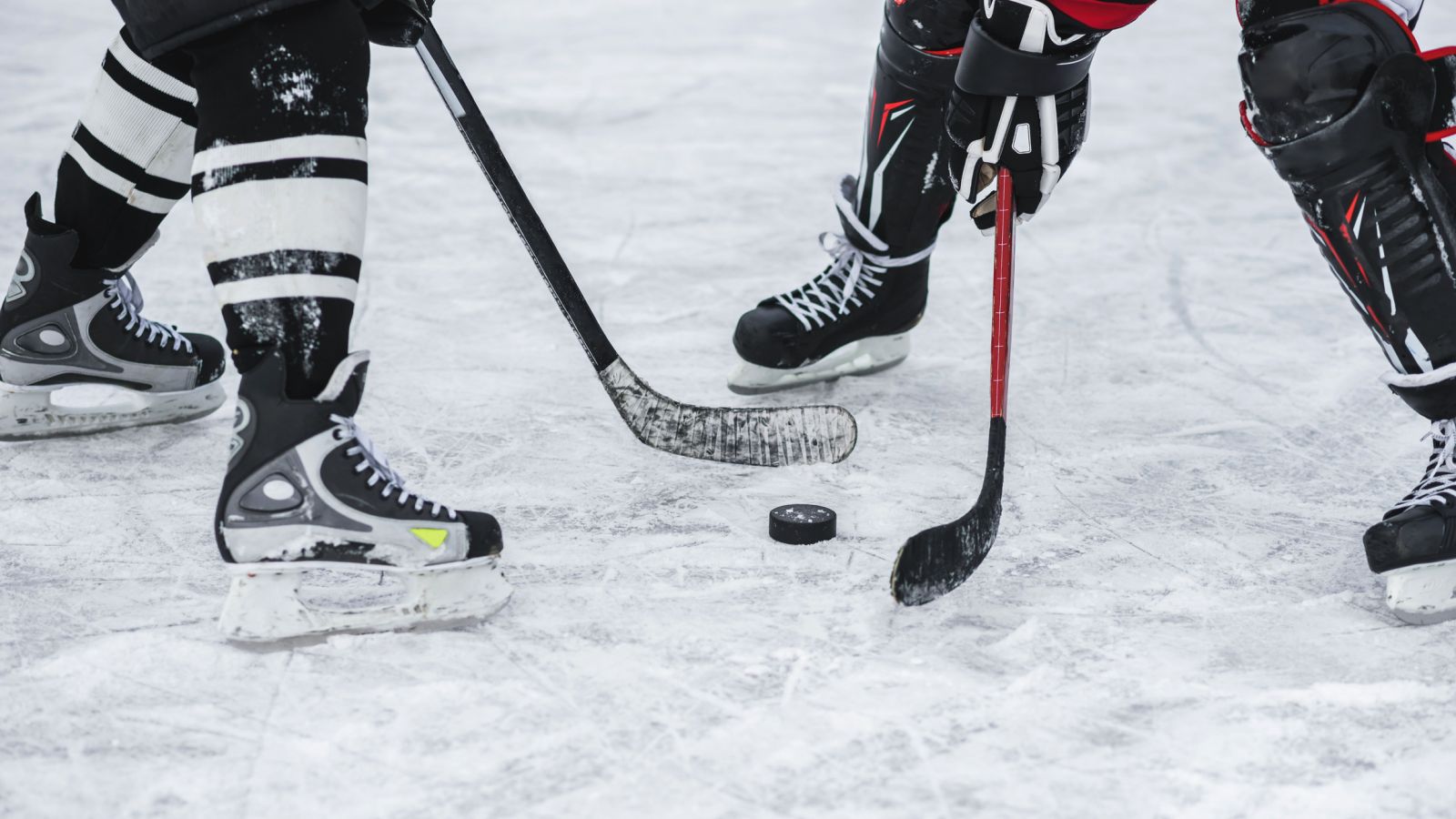Hockey Injuries & Prevention
What Are Hockey Injuries & Prevention?

Ice hockey is one of the fastest growing organized sports in the United States. USA Hockey, the nation’s governing body for the sport, states that more than 500,000 individuals are involved in youth hockey through its organization alone. Both boys and girls play ice hockey, with opportunities for girls increasing every year.
Although hockey may appear dangerous, with the right equipment and training, it can be played safely.
Getting Ready To Play
Before taking to the ice to play hockey, two things are necessary: participants must have mastered basic skating skills (such as skating forward and backward), and they should have the necessary equipment to prevent injury.
Many people rent figure skates to learn how to skate. Skating with hockey skates is different. Most ice rinks offer pre-hockey skating classes to teach skating fundamentals. These classes are available at all age levels.
Ice hockey requires a lot of protective equipment, and it must fit properly to effectively protect the player. The necessary equipment includes:
- Helmet
- Mouth guard (either custom-made or “boil and bite” off the shelf)
- Face shield
- Shoulder pads
- Elbow pads
- Gloves
- Jersey
- Pants (girdle and shell)
- Cup/supporter
- Shin guards
- Socks
- Skates
- Stick
Goalies require additional equipment:
- Face shield
- Leg pads
- Catch glove
- Blocker
- Chest and arm protector
- Helmet with face mask
- Goalie skates
- Goalie stick
Hockey equipment can be expensive. Good used equipment can often be found, but make sure it fits appropriately.
Preventing Common Hockey Injuries
Good equipment is only the starting point to safer ice hockey. Because of the contact nature of ice hockey, it is considered a collision sport. Injuries occur from contact with other players, the stick, the puck, and the boards. Non-contact injuries may occur from overuse or acute trauma.
Each year, more than 63,000 hockey-related injuries are treated in hospitals, doctors’ offices, clinics, ambulatory surgery centers, and hospital emergency rooms. The risk of injury cannot be completely eliminated, but most injuries are mild, and may include bruises, muscle pulls, ligament tears, and cuts. More serious injuries are rare, and may include broken teeth, concussions, broken bones, dislocations, and spine or spinal cord injuries.
In an effort to reduce hockey injuries, researchers have conducted studies to better understand the risks of play. Rule changes and better enforcement of existing rules, along with improved protective equipment, are some of the outcomes of this research. In addition, educating coaches and officials about injury risks has become a priority. Potentially dangerous actions, such as checking from behind and the using the stick or helmet as a weapon, have been eliminated from the game.
Coaches, athletes, and parents must be aware of the possible injuries and follow the rules in place to prevent them. Serious injuries can be avoided if players avoid dangerous tactics or overly aggressive play.
Team Play
Youth hockey is usually divided into two types of teams: travel and in-house. The in-house program is often sponsored by the home ice rink and is designed for teaching fundamental skills. These generally include puck handling, game rules, power skating techniques, and basic plays. More advanced players typically move on to travel teams. These teams will travel to other towns to play other travel teams. The play of these teams is usually more advanced.
There are five divisions in youth hockey:
- Mites (8 years of age and under)
- Squirt (9 and 10 years old)
- Pee Wee (11 and 12 years old)
- Bantam (13 and 14 years old)
- Midget (15, 16, and 17 years old)
In addition, there are four upper level divisions:
- High school leagues
- Junior A
- Junior B
- Collegiate
Our team is here for you
We offer the best, least invasive and least aggressive options to relieve your pain and symptoms so you can get back to the life you love. Atlantic Orthopaedic Specialists Sports Medicine Care Center has convenient locations in Virginia Beach, Norfolk and Chesapeake.




